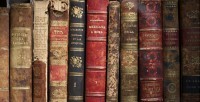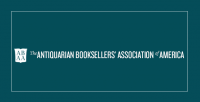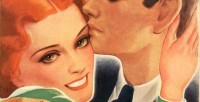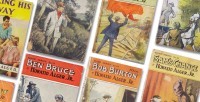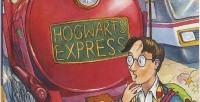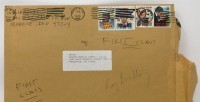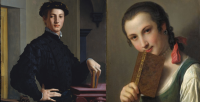Like any field of endeavor, the rare book trade has its quirks and rituals, its habits and history, its jargon and secrets. Unlike some other trades, book dealers have never been afraid to commit their secrets, memories, and insights to paper. There are many, many fascinating and educational books detailing the inner workings of the rare book trade. We polled some dealers and collectors and arrived at this list of the top ten books every book collector should read. Let's start with the more-educational books: 1. ABC for Book Collectors by John Carter The classic reference work on book terminology. First published in 1952, the current edition (the 9th) has been updated to include terms spawned by the internet and -- for the first time -- illustrations! With subtle wit and humor, first John Carter and now Nicholas Barker unpeel the layers of meaning from phrases that -- although once more-common -- now appear terribly obscure outside of rare-book circles. In a field where it's essential that buyers and sellers understand what they're talking about, ABC for Book Collectors is an excellent guide to our common language. After one learns the terminology used in the used book trade, the next thing one needs is a guide that can help you determine whether the book you have come across might of particular value and/or interest. While an acquaintance with an experienced rare book dealer is the best way to access this kind of information, there are several good books that ABAA members an... [more 10 Books Every Book Collector Should Read]
On Collecting Books
The ABAA has launched a program where seasoned ABAA members act as mentors, i.e. business advisors and guides, to novices in the rare book field and/or those not currently in the trade but whose background and interest in the vocation would make them good candidates to enter the field. The goals of this program are to: • Provide dealers early in their careers with the opportunity to advance their professional development • Build a recruitment pipeline for the Association that enhances the number of qualified applicants and diversifies the membership • Afford mentees the opportunity to build a relationship with an ABAA member • Educate potential candidates about a career in the trade (for example, graduate students looking for a profession outside of academia) Structure ABAA Headquarters is responsible for coordinating and implementing the program. Mentors and mentees will be paired with consideration of a variety of factors such as any specific requests, specialization/area of focus, and business structure. Location could also be a point of consideration but, with the availability of technology like Skype, need not be a requirement. Once paired, mentors and mentees will be introduced via ABAA Headquarters and, if both felt that it was a suitable fit, would commence a one year period of mentorship. Over the course of the year, mentors and mentees are required to have face to face communication for a minimum of 1-2 hours each month (this could be completed electronicall... [more ABAA Launches Mentorship Program for Novice Book and Manuscript Sellers]
The makers of Downton Abbey go to great lengths to get their period details and history correct, and one of the ways they do this is by incorporating contemporary books into conversations and even at times the main plot. In fact, it can be difficult to find an episode of Downton where the references to Dickens, Trollope, or now-obscure English historians are not flying thick and fast. When Lady Edith started dating a London editor, one expected to meet Virginia Woolf or E.M. Forster at a party any moment. Alas, poor Michael Gregson died before the producers could work a Bloomsbury party into the show. (Post script: After this post was first published, I attended the "Dressing Downton" exhibition at Asheville, NC's Biltmore House -- which has a stunning library -- and discovered that Virginia Woolf was a guest at that London party, albeit in a blink-and-you'll-miss-it, non-speaking role. Her costume is the one on the right of the photo below. The exhibition was so popular it went on tour, and an expanded version will open at the Biltmore House in November 2019 and run until early April 2020.) Outfits worn by Lady Sybil (left) and Virginia Woolf (r) in Downton Abbey. Shown in the Biltmore House as part of the "Dressing Downton" exhibition in early 2015. (Source: Cincinatti Enquirer.) Given creator Julian Fellowes' attention to detail and habit of tangling the fictional Crawleys in real historical events, those featured books are genuine and are generally well-chosen. The disce... [more The Books of Downton Abbey]
Faith Baldwin was once one of the bestselling authors in America, although she was never a lauded award-winner. Instead, Baldwin practiced what was variously called “light” or popular fiction, and today is generally called romance — usually with a touch of superiority. In her obituary, The New York Times declared her 'the doyenne of American light fiction writers.” Raised in relative wealth and comfort in Manhattan, Baldwin initially saw acting as a means for a single women to gain independence, but as her writing career took off, she embraced it. At the start, she wrote for the women's magazines, publishing poetry and prose -- whatever there was a market for. In 1921, she published her first novel, Mavis of Green Hill, and by 1927 she was able to regularly sell the serialization rights for many of her novels to mainstream magazines, assuring herself of a steady income. Critics have alternately praised Baldwin for being a proto-feminist and dismissed her for being too conservative, which is unsurprising as Baldwin generally wrote about the domestic concerns of love, marriage, and a woman's career, concerns which tend to be under-appreciated in any age. But, in novels like Private Duty (1935), Hotel Hostess (1938), and Career By Proxy (1939) she often returned to the question of whether a woman could be fulfilled through work and also find marital bliss — although her heroines often had to accept their fate of leaving their job after marriage — and she frequently f... [more Collecting Faith Baldwin]
In an effort to assist in the recovery of materials missing as a result of the Carnegie Library theft, the ABAA would like to bring to the public's attention the list of items believed stolen. Click this link to view the list. Update 8/20/18: The following list includes more details. Should any member of the public identify having purchased or otherwise having knowledge of the disposition or current location of any items from the Carnegie Library—whether on this list or not—please contact one of the following detectives from Allegheny County District Attorney's Office: · Det. Fran Laquatra (412) 388-5305 flaquatra@alleghenycountyda.us · Det. Perann Tansmore (412) 388-5307 ptansmore@alleghenycountyda.us ` · Det. Lyle Graber (412) 388-5316 lgraber@alleghenycountyda.us Please note, the detectives do not have reason to believe that anyone who may have purchased any of these items was necessarily aware that the material had been reported stolen. The ABAA appreciates your attention and assistance with respect to this grave matter. Please check our post from March for further details, including additional information on collection markings. Sincerely, Vic Zoschak President, ABAA Brad Johnson Chair, ABAA Security Committee Susan Benne Executive Director, ABAA [more Carnegie Library Theft]
In his day, Horatio Alger, Jr. (1832-1899) was one of the most-famous authors in America. While his books have largely fallen out of print today, everyone is familiar with his main idea, because Horatio Alger, Jr. popularized the “pulling oneself up by the bootstraps” ideal that permeates so much of American life. It's not too much of a stretch to say that Alger gave America its great national myth, that hard work (and clean living) can allow anyone to achieve success — although people often seem to overlook the amount of sheer luck that comes into play in his fiction. A more-jaundiced reading of Alger's oeuvre would assert that success for Alger was usually defined as social advancement or preferment, and it was usually achieved by finding a wealthy patron through performing a selfless deed or some service (returning a lost wallet or proving ones virtue in some way). Of course, the only individuals who could achieve this social advancement were white males, and the agent of this change was invariably an older white male. Nevertheless, his books were popular after the Civil War, and achieved a huge surge in readership in the early decades of the Twentieth Century. It wasn't an easy road to success for Alger, the son of a Unitarian Minister and descendant of Puritan ancestors. After attending Harvard -- where Henry Wadsworth Longfellow was part of the faculty -- he published fitfully, and none of his varied early books really found an audience. After a brief attempt to w... [more Horatio Alger, Jr.]
Longtime ABAA member John J. DeMarco of Saratoga Springs, NY passed away on March 26, 2019. He was 70, and was being treated for cancer. His store, Lyrical Ballad — which DeMarco opened after graduating from college in 1971 and ran with his wife Janice — has been a fixture in Saratoga Springs for almost 50 years, and is “hog heaven for a book lover,” according to fellow ABAA member Kevin Mac Donnell. Saratoga Springs Mayor Meg Kelly paid tribute to DeMarco's resiliance through decades of economic ups and downs, saying “Lyrical Ballad outlived most of the big box stores and really was the foundation for much of the revitalization of Saratoga Springs. His store survived it all due to the strength of his personality.” DeMarco had a knack for uncovering some truly rare items over the years, such as a cache of Herman Melville material that included letters from Nathaniel Hawthorne and a first draft of Typee, that a local widow had found amid other material in her barn. Several friends and contemporaries remarked on his reputation for supporting every civic-improvement and artistic project in Saratoga Springs; his friend and fellow business owner Gordon Boyd said DeMarco "was just a priceless community leader and an example for all other business leaders." Several regional newspapers have published articles on DeMarco this week, and the Yaddo writers' colony also marked his passing with a tribute on their Facebook page. Schenectady Daily Gazette: “Longtime owner of Ly... [more In Memoriam: John J. DeMarco]
Many people now collect J.K. Rowling's Harry Potter books. In fact, the major book collectors of tomorrow will likely bond over their memories of midnight-release parties and argue the merits of Mary GrandPré versus Thomas Taylor's cover illustrations. My own book shelves host two complete sets (so far), one American (hardcover) and one British (paperback), and one set-in-progress (the illustrated editions). My children are lobbying for the addition of a set of the American paperbacks illustrated by Kazu Kibuishi, because the spines of each form an image of Hogwarts Castle when displayed in sequence (known as a "linked-spine binding" in the trade). Naturally, the hardcovers are no longer in great shape, having been read by every family member multiple times, but replacing them with pristine copies is stangely unappealing. It's in-part their hard-earned imperfections that make these books so beloved by us. 20th Anniversary Covers by Brian Selznick To mark the end of Harry Potter's 20th-anniversary celebrations, Scholastic released new paperback editions with covers by Caldecott Award-winning illustrator Brian Selznick (The Invention of Hugo Cabret) on June 26, 2018. Unlike the previous edition, which featured the linked-spine binding by Kazu Kibuishi, the Selznick covers form a mural when shelved in order face-out (see animation below). Another exciting aspect of this edition is the addition of a map of Hogwarts at the beginning of each book! The Harry Potter phenomen is cred... [more Collecting Harry Potter]
It is January 4, 2019. Payroll Friday. This morning I stopped into my accountant's office to pick up the checks. I signed a number of forms and checks for the various taxes and fees and other government necessities that were due. I've been going in to that building almost every other Friday for 35 years. Before that I calculated the taxes for the few employees I had myself. That would be impossible today. The complexity has become legend. I can't imagine starting a business from scratch today—with no experience. In the last couple of weeks, we've been setting up sale tax accounts in over 30 states. Insanity. Payroll Fridays: 35 x 26 weeks per year = 910 visits. Occasionally I've asked someone else to pick up the payroll. But I'm sure with my other visits for various reasons, I have crossed that threshold over a thousand times. I love the people there. They are old friends. But each time I go, it's like a dentist visit. It will be expensive and it will hurt. They connected two neighboring two-story bungalows and made them one building just as I began my relationship with them all those years ago. Otherwise, the building and routine has been virtually unchanged. They mail the forms and the government checks for me. I can't be trusted to do that myself. My life is a paper life. There are so many papers in this place it is easy to lose things. I've dissociated myself from external and internal accounting. There are people there and here that are much better at it than I. The th... [more Dandelion Wine]
The Northern & Southern California Chapters of the Antiquarian Booksellers' Association of America would like to announce The California Young Book-Collector's Prize. UPDATE: Deadline extended until December 15. Submissions should be sent as a .pdf file to Ben Kinmont, Chair of the Northern California Chapter of the ABAA, at bkinmont@gmail.com. Most great collectors started when they were young, and most great collections started with a passion for a particular object or subject. When these objects are books and manuscripts, the collectors are called bibliophiles, or lovers of the book. Curiously, the love of books continues unabated today, despite their increasing rarity and the rapid growth of digital media. Some might even argue that the printed page has taken on a new meaning and cultural resonance in our era of computers and electronic texts. In recognition of the next generation of bibliophiles, we have created The California Young Book-Collector's Prize. The competition is open to collectors aged 35 and under who are living in California. All collections of books, manuscripts, and ephemera are welcome, no matter their monetary value or subject. The collections will be judged on their thoroughness, the approach to their subject, and the seriousness which with the collector has catalogued his or her material. The winner of the competition will be awarded: 1. A gift certificate of $500 to spend at the 2019 California International Antiquarian Book Fair 2. An exhibition of... [more ABAA’s California Chapters Launch Book-Collecting Prize, Deadline Extended!]


